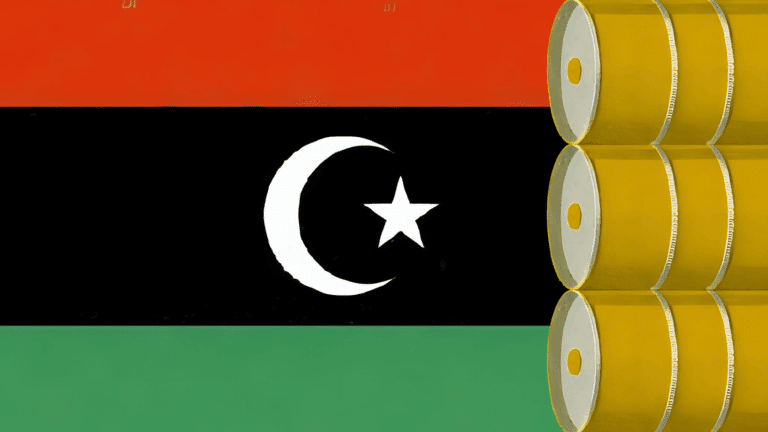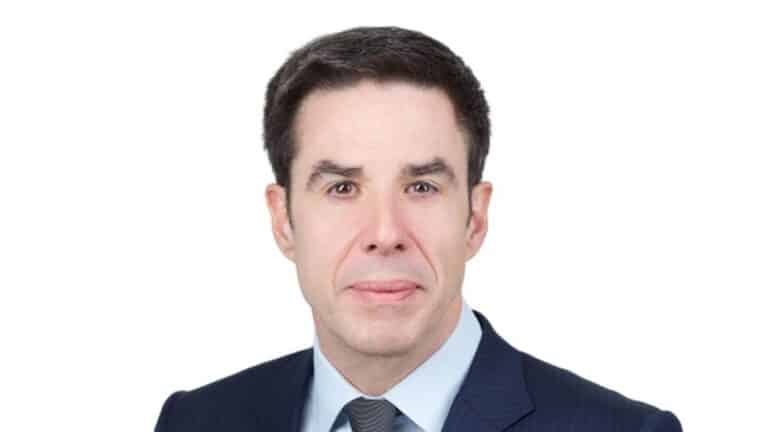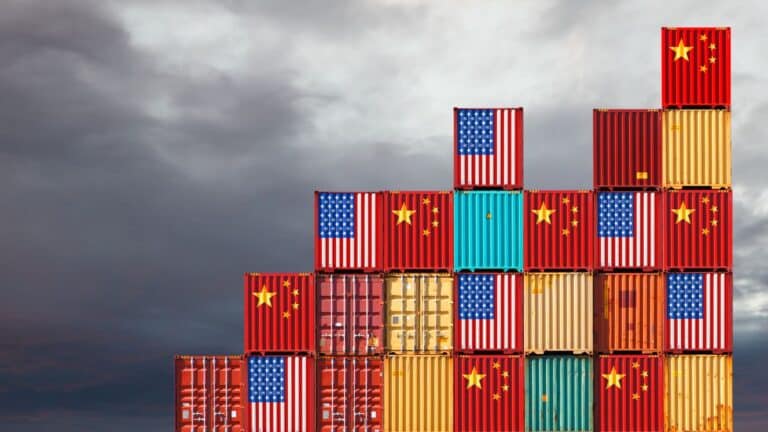Tatiana Mitrova: Indian demand is very price sensitive, so it might seem not that much for the other markets, but for India it’s also painful. So the choices between two bad options.
Shayak Sengupta: I think there has been a lot of trust that’s been lost and it’s empowered those in New Delhi who have remained skeptical of warming or closer ties between the United States and India.
Richard Nephew: Ultimately, I think where this comes back to is are sanctions still a useful part about putting pressure on Russia to end the war?
Jason Bordoff: After President Trump met with Indian Prime Minister Modi in the White House back in February, US India relations appeared to be on solid ground. Back then Trump was confident he could broker a quick resolution in Russia’s war against Ukraine. The Trump administration imposed a 25% tariff on India on August 7th, and then because of India’s continued imports of Russian oil, imposed a further 25% tariff that is set to go into effect on August 27th. Coincidentally my birthday, and also August 27th, being the day that Colonel Edwin Drake successfully drilled for oil in Titusville, Pennsylvania and began the oil revolution. So my birthday, August 27th, very important energy date. This move, the tariffs on India, also threatened to undermine relations between the US and India. The dispute impacts more than India’s energy imports. It’s also forcing bigger questions about India’s approach to foreign policy and the country’s longstanding policy of strategic autonomy.
So will India bow to US pressure and reduce its Russian energy imports, or will India continue to import a significant amount of oil from Russia? And what does all of this mean for global energy markets and the use of coercive economic tools like tariffs or sanctions in the years ahead?
This is a special episode of Columbia Energy Exchange, a podcast from the Center on Global Energy Policy at Columbia University. I’m Jason Bordoff. In light of the Trump administration’s announcement of new tariffs on India, we’ve convened three leading experts right here at the Center on Global Energy Policy to discuss the economics, geopolitics, and energy market implications of this escalating dispute. Today on the show, my colleagues, Richard Nephew, Tatiana Mitrova, and Shayak Sengupta.
Richard is a senior research scholar here at the Center on Global Energy Policy and former US Deputy Special Envoy for Iran, where he played key roles in economic sanctions policy.
Tatiana is a global fellow here at the center and former Deputy Director General of the National Energy Security Fund in Moscow, bringing deep expertise on Russian energy markets. And Shayak is a senior research associate here at the Center on Global Energy Policy and leads our India program. He’s an expert in South Asian energy policy and US India relations.
Richard, Tatiana, and Shayak joined me to unpack this complex dispute. We discussed India’s rationale for importing Russian oil, the motivations behind Trump’s proposed tariffs, potential alternatives for Indian energy imports, and the broader implications for US-India relations and for global oil markets.
Richard Nephew, Shayak Sengupta, Tatiana Mitrova, my brilliant colleagues, wonderful to see you all. Thanks for joining for a quick discussion here to help the listeners of Columbia Energy Exchange understand what is happening right now with trade negotiations between the US and India and how energy, particularly Russian oil plays into that. So maybe I’ll just start with you for people listening, they may have seen headlines around this, but what is happening with the trade negotiations between the US and India? The US India relations seem to be doing relatively well earlier this year. That seems less the case now. And then tell us what role oil from Russia has started to play in those negotiations.
Shayak Sengupta: So just as a background, earlier this year, US-India relations ostensibly started off on a high note. Prime Minister Modi came to Washington to visit President Trump, but they’ve kind of nosedived over the last few months. Most recently the Trump administration came out with an executive order penalizing India’s imports of Russian oil. So originally there were 25% tariffs on Indian exports to the United States. There’s an additional 25% due to these Russian imports. This comes at a time when there are a number of issues that have been causing tension between the United States and India, one of which is given the recent conflict that India and Pakistan have had India pushing back on Trump’s public statements claiming credit for mediating the conflict, which is something that India vehemently denies. There’s also been a lack of trade concessions given those baseline 25% tariffs. And these trade negotiations that the United States has been doing with many of its partners, the Trump administration has been looking for further concessions to open India’s protected agricultural markets to American exports. And then lastly, directly related to Russia, intentions to put pressure on Russia to end the war in Ukraine. So a lot of those in India have understood these tariffs as a retribution for and a conflation of a number of these issues that have caused tensions.
Jason Bordoff: And just for people listening to understand, you went through these numbers quickly, 25 and 25, there’s a 25% tariff. Obviously a lot of trade negotiations going on and we’ve seen this administration put tariffs in place or threaten tariffs and then try to reach a deal, but then an additional 25% because what? Because India is buying Russian oil or is it unclear?
Shayak Sengupta: So that’s what the text of the executive order says. There’s been reporting suggests that there are other reasons. So from what I understand is that the 25%, the baseline that was being negotiated out, there was a deal that was negotiated, it reached Trump’s desk and Trump wanted further concessions. There’s also reporting that suggests that other US trade partners offered more concessions. So at least at the working level, at least between the negotiators, both the US and the Indian side thought they had a good deal, but the White House wanted further concessions from India.
Jason Bordoff: So Richard, tell me if I’m thinking about this the right way, there’s maybe two ways to read an action like this. One is: squeeze India where it hurts in order to extract a better deal in a trade negotiation. The other is: squeeze Russia where it hurts and Russia is supposed to be, gets a lot of oil revenue by selling to India and we’re going to try to prevent people from buying Russian oil. You have a lot of experience with that in how you constructed sanctions against Iran. How should I think about what’s going on here or do we not know?
Richard Nephew: Yeah, frankly, I don’t think we know. I mean I think that there’s a good chance here that the Russia element of this is more opportunistic than it is necessarily the intention of the tariff maneuver that’s here. I’ll say though, I mean the language that’s in the executive order and the language that the president has used is pretty harsh as relates to India’s relationship with Russia and the degree to which Russia is continuing to prosecute a war in Ukraine that he wants them to stop. So you can make an argument that this is just a different sort of way of applying those sorts of oil sanctions that we did against Iran this time against Russia by trying to leverage the broader economic interest that the Indians have.
Jason Bordoff: But there is, I presume, a pretty important difference between secondary sanctions as a tool to say you’ll go after financial institutions if anyone buys in that case Iranian oil, it could be Russian oil. And we should make clear for listeners, there have not been by Biden or Trump secondary sanctions imposed to try to prevent people from buying Russian oil. Tariffs are a different thing. There is a different mechanism in terms of I think who pays for them. There’s a lot of economic evidence that it’s US consumers that would pay if we had higher import tariff on Indian exports to the US. But just talk a little bit about the different instrument here.
Richard Nephew: Yeah, suffice to say this would not be my choice if I was setting out to figure out what’s the best way of putting pressure here. And you started off with the key point, which is that this is an economy wide set of pressures that are being applied on both the United States and India in response to something that otherwise could be much more targeted. In past cases, we’ve attempted to leverage pressure on financial institutions primarily, but also the actual purchasers to get them to stop doing something and to basically say, listen, you’re going to have a hard time doing business internationally. Certainly a hard time doing business in the United States if you continue to engage in transactions with this individual or entity that we’ve got concerns with. That’s what we did in Iran. That’s what we’ve done in other cases in the past. This time what we’re saying is basically you’re not allowed to have any kind of relationship with Russian oil purchases or you have to face a massive countrywide set of tariffs, which again introduces a lot of questions as to what are the actual steps required to remove the sanctions.
There was always a very clear understanding, I think, among our partners when we had very specific targeted sanctions. Look, if you don’t buy Iranian oil, then you’re not in any kind of risk here. Is that actually the level that’s being placed here that there have to be purchases going to zero or not? Is there a mechanism that’s here? It’s a big open question that’s not laid out. And then the other big point that you kind of flagged, India is not the only game in town here. When we had Iran sanctions in the past, or frankly for that matter, other countries as well, we were addressing the purchasers of a product we didn’t want to be sold and the revenues associated with it. In this case, India is being targeted and there’s a very vague process about going after other Russian oil purchasers. It’s not really clear what the levels are that are going to be required of reducing those purchases. What the process is for how other countries can be evaluated. And so I think if you’re India, you’re feeling a little singled out here when there are other people engaged in this sort of trade as well.
Jason Bordoff: Which are in some cases bigger, I think China buys more oil from Russia than even India does. Right?
Richard Nephew: Right. And I think this goes back to a big threshold sort of question. What’s the outcome that you want to see here? Do you want to see Russian oil exports going to zero or do you want to see some sort of accommodation on the trade piece? One could make an argument. And if you look at some of the statements that have been made by US officials since the India specific order came out that the reason why China wasn’t targeted is it’s too big and there are other trade issues in the fire right now. Well, that suggests that if there is a solution on India trade issues that all of a sudden this Russia problem is not so significant. And that is a big bearing on how you’re communicating what your sanctions tools are all about. A big bearing on what the actual definition of national emergency is and frankly how other countries look at US sanctions tools when they try and evaluate, is this really about the problem that’s in target here or is it about something else altogether?
Jason Bordoff: But Tatiana, given what Richard just said, why is this a big deal then either for India or Russia? Oil’s a pretty fungible global commodity. Even if the US imposed tariffs and said India should stop buying Russian oil, somebody else would buy the Russian oil instead and India would buy it from someone else instead. Talk first – just help people understand, we haven’t gotten to this yet in the discussion about what we’re talking about, how much oil, just the facts, how much oil does India buy from Russia? How important is that to the Indian economy? How important is India as a customer to Russia? And then maybe we’ll come to the question I asked.
Tatiana Mitrova: Yeah, sure. So for India it’s really important, 35, 36% of all its crude imports and Indian refineries are making a lot of money on this oil cracking aid and sending refined products primarily to Europe, which has banned both Russian crude and Russian products. And so since then, Europe is suffering from a diesel shortage and this diesel coming from India, it’s really essential. On the other hand, for Russia, it’s nearly symmetrical. 38% of all the Russian oil exports, its second largest buyer after China, as you’ve mentioned. And losing this customer is really painful. Of course, as you said, our global oil market is liquid and if India was given let’s say three to six months, it could adjust, but it has just 21 days, which is nothing. And right now the market is quite tight. So there is no free 1.8 million barrels of oil per day. This is the amount that Russia is sending to India, which could be replaced just immediately.
Potentially there could be some redirection of the flows from the Middle East, but then Europe will be left without crude. And for India it will mean additional payments, additional transaction costs, lower refining margins, and it is all taking time. Another opportunity how the global market could rebalance. It could be China, which is already taking a lot of Russian oil, if it would agree to absorb these additional 1.8 million barrels per day and instead send the other grades to India. But why would China do this just as a courtesy to India? I doubt moreover, China itself has a very strict diversification policy and Russia has already reached its maximum limit of reliance on one single supplier. And you understand also if China would agree to take even more Russian oil, it’ll be a very important geopolitical signal. First of all, for the US I doubt that China will go for that. So most likely if we are going in this direction, and if India, if we are just modeling this scenario when India by August 27 completely stops purchases of Russian oil, that would also mean quite substantial spike of the global oil price. And we have a proxy for this, what happened with Iran, what happened in 2016? So we are talking about $30 per barrel. That’s a lot, three years.
Jason Bordoff: Sorry, $30 per barrel, if what happens?
Tatiana Mitrova: If India stops purchasing Russian oil completely and if China doesn’t absorb these volumes.
Jason Bordoff: Meaning? And just to be clear, you’re saying in that scenario you’re describing the 1.8 or so million barrels a day of Russian oil that is sold to India, is just taken off the global market.
Speaker 5: You’re talking about the…
Jason Bordoff: Impact of losing 2 million barrels a day of supply.
Tatiana Mitrova: Exactly.
Jason Bordoff: But again, that probably doesn’t happen overnight and over time, just help listeners understand refinery economics, there may be impacts because you’re sourcing crude from somewhere else. There are certain discounts that will emerge in the market as a result of that. But flow should shift around. If one buyer just says, I’m not going to buy oil from Russia anymore, which Europe did and flows shifted in response to that action, that would be the same here or no?
Tatiana Mitrova: Europe did it announcing the plan in advance, the market was informed and it had time to adjust. Here you are absolutely right. If there is a smooth process, if it takes like three to six months, yeah, it will not be painful. But making it overnight, that’s the challenge. If there is a time gap, then OPEC plus could increase its output. Independent producers could increase their outputs. So there is this sort of adjustment, but I’m not sure that we are into this scenario at the moment. And yeah, Russia will obviously go for further steeper price discounts to find markets for its oil. But as I said, China is doubtful. I don’t think it will take additional volumes, at least significant additional volumes. Turkish capacity is much smaller and it also cannot absorb it. The other buyers are constrained by politics or infrastructure. So it’s not that easy to make this move very quickly.
Jason Bordoff: It’s difficult to predict usually what the Trump administration is thinking and will do, but I would suspect a rapid overnight move that would push up oil prices globally, $30 a barrel would not be an economic outcome. The Trump administration would be happy with either Shayak. Let me first, just to make sure our listeners understand. I think Tatiana said India gets about 35% of its imports from Russia, and just so people know it imports almost all of its oil consumption. So that’s a big number just as a share of the total we’re talking about.
Shayak Sengupta: Yeah, but almost 90% of its oil is imported.
Jason Bordoff: Right. Just wanted to clarify that. And then if you have this process of adjustment, Tatiana is talking about, let’s imagine India bought less from Russia and over time more from someone else. Just your understanding, maybe Tatiana, you want to weigh in on this too is that you end up paying a dollar or two more or does that have a more significant economic impact on India? Because I think India has been buying pretty heavily discounted Russian oil, which was part of the whole policy that the Biden administration was pursuing. The idea of the price cap was to force a discount. So the global market doesn’t lose Russian oil, but maybe Moscow gets less revenue for it.
Shayak Sengupta: Yeah, I think it really depends on what your alternative is if you’re an Indian decision maker. The reason why, part of the reason why these discounts were availed by India was because of how sensitive India’s economy is to the price of oil. So when Russia invaded Ukraine, the spike in global oil prices meant that India would have to pay more for oil, which would depreciate the Indian rupee, which would increase inflation directly and indirectly for the country. I think now given that the price differential between Russian and non-Russian oil has decreased, that hit is on the order of about 10% more for India’s imports of oil. So if your economy’s facing 50% tariffs for its largest export market, the estimates I’ve seen are on the order of almost two to three times in terms of percentage GDP hit from switching from making sure that you have American export markets available rather than continuing to import Russian oil. So I do think none of these options come cost free for India, but given the state that we’re in right now, decreasing those imports of Russian oil poses fewer costs than the tariffs that are about to come into place in about two weeks.
Jason Bordoff: Tatiana. And I think anything you’d add to that in terms of the cost either to India or to Russia?
Tatiana Mitrova: I wanted to adjust a couple of numbers. So in the beginning of August, these price discounts that Russia was providing were like $1 to $3 per barrel, not that much. While in 2022, I think they’ve reached $25, even $30 per barrel. That was a very attractive proposition. But switching to the other suppliers, replacing Russian oil in a hurry, as I said, it will imply additional costs for India. I would say if we are talking not about complete replacement, but partial, let’s say 0.5 to 1 million barrels per day, it’ll be additional $4 to $8 per barrel for India. And as Shayak mentioned, Indian demand is very price sensitive, so it might seem not that much for the other markets, but for India it’s also painful. So the choices between two bad options.
Shayak Sengupta: One thing I would add though is while the government of India has justified these exports as a way to protect their consumers and that there’s truth to that, a lot of these benefits from discounted Russian oil actually have not been passed on to the Indian consumer. Indian refiners, whether that was owned by the government or private refiners have largely availed the differential that you see from importing cheaper Russian oil and selling diesel and gasoline at global prices. And that’s mostly because the Indian government controls the price of retail fuels through its VAT and excise taxes. So there has been a conversation domestically within India saying if global oil prices are really going lower, why aren’t those paying at the pump availing any of those benefits?
Jason Bordoff: Yeah, I think that was a similar dynamic in the US in periods where we’ve seen a larger discount spread between the US price, WTI and the global price, Brent, the price consumers pay gasoline is set in the global market and the benefit of that discount tended to accrue to refiners domestically. So it sounds like a similar situation. Richard, can you just put this whole issue in the broader context of what is happening with the US, with Europe, with pressure to try to target Russian energy exports from the standpoint of pressure in the conflict with Ukraine, there had been, as I talked about before, under Biden, this idea of a price cap and issues of shipping insurance if people didn’t stay below that price cap, is that any of that still relevant or is really all of that being ignored right now?
Richard Nephew: Well, I think it’s still relevant, but frankly it just hasn’t worked and it hasn’t worked nearly as much as people thought it might. I mean, the theory behind it made some sense, right? That you wanted to avoid the profound global disruptions that would come by really going after hammer and tongs Russian exports, but you wanted to make sure that you did have some effect to try and limit Russia’s ability to fund the war, right? So we got to this place, a halfway house of this price cap, but the problem is price caps are very hard to enforce. There’s all sorts of ways in which people can try and undermine them, including by including charges that may not be included in other kinds of oil related transactions. That still means that a lot of money gets back to Moscow. And I think this is the real problem is that ultimately even a $60 a barrel cap, that’s still a lot of money that is flowing into Russia and Russia’s being able to use that to prop up their currency and to manage some of their domestic issues that they’ve had.
So over the course of the last year-ish, there has been a lot of discussion about whether or not the price cap needs to be lowered from where it is now at $60 a barrel to something a little bit closer to where there’d be a pinch frankly on Russia or whether or not we need a new construct altogether. And I know that there’s been some discussion about whether or not there are other targets that should be included, whether or not those are banks or other aspects of the oil trade that should be brought into sanctions. But ultimately, I think where this comes back to is are sanctions still a useful part about putting pressure on Russia to end the war? And I think the Trump administration entered office thinking that they could cut a deal pretty quick because Trump and Putin would be able to get into a room and sort things out that’s not worked out the way the president wanted.
We’ll see whether or not the summit that’s going to happen at the end of this week, so the Friday the 15th for folks who are listening on a different day, whether or not there is some kind of deal or progress towards a deal that’s being reached. But I think ultimately the discussion point still comes back to if a deal isn’t there, what means do we have to apply pressure onto Russia? And if it’s not going to be about oil and it’s not going to be about energy related exports, candidly, do we have tools, are there ways to really put pressure on the Russians to make them change course at a strategic level?
Jason Bordoff: Yeah, we talked about how this is a tool to apply some pressure to the Indians and the trade negotiations, but Tatiana, can you talk about the upcoming summit in Alaska and how this issue plays into that? Is this a meaningful aspect of pressure being applied to Russia in this case from the US?
Tatiana Mitrova: Russian oil revenues started to reduce early this summer with the oil prices going down and they went like 15 to 20% below the last year level. It’s not a catastrophe, but it’s felt already. And I’m pretty sure that it’s not just a coincidence that right after the first announcement of this plan of Indian tariffs Putin requested a meeting with the US envoy. So for me, that looks as a turning point. This is a really painful threat. Again, it will not completely destroy the Russian oil industry and Russian military machine because if Indian flows stop and prices go up, actually Russia would still receive substantial revenues, but it’s making the life of Russian authorities far less advantageous and if there is a chance to get the deal, this is now. So Putin, as usual, is making extremely harsh statements on his demands. He wants more territories, he wants all these guarantees of Ukrainian denazification as it’s called, basically change of the government and change of the whole Ukrainian authorities. So there is still a big question mark whether the US will accept these demands, but I’m pretty sure that this Indian oil card played its role. It’s already sensible.
Jason Bordoff: So just to bring all this to a close, Tatiana, tell people listening what you expect the most likely oil market impacts to be. It sounds like you’re giving scenarios $30, even the four to eight that are possible, but probably…
Tatiana Mitrova: Not very realistic.
Jason Bordoff: That would only happen if there was an immediate overnight reduction of the total amount of oil that Russia sends India probably not incredibly likely right now. Is that the right way to think about it? And just remind people when you said $4 to $8 what that was referring to?
Tatiana Mitrova: Right, Jason? So the catastrophic scenarios are not really very likely. It’s more the game of the models, but my expectation is that nothing actually will happen in Alaska. Time will tell. Most likely it will be just the beginning of the negotiating process. And that’s actually what the US administration also announced, that we are not expecting any peace deals signing or whatever. So the window of 21 days, which was given to India, I think is a pretty good maneuver actually to absorb this uncertainty and to say, okay, the threat is still there, but we started to move in the right direction so we are not applying this threat. Hopefully India will also make some other concessions until the end of August, and that would allow the US administration to remove this 25% tariff and to go into long and I’m afraid, very painful and difficult negotiations with Russia and Ukraine without actually delivering any immediate change. So my guess is that there will be nearly no influence on the oil market. So at least some good news for your listeners. You mentioned in a piece we put out on our website and earlier in the discussion the potential for a four to $8 impact. And just to be clear, that was what scenario, what were you?
Jason Bordoff: It is, it is scenario where India is not able to refuse completely from Russian oil until the end of August, which is again most realistic scenario where it starts to replace step-by-step Russian oil in few months. So this period of adjustment and change of the flows and additional expenditures, it will probably give these additional $4 to $8 per barrel to the global market, but it’s not for a long period of time. I would bet on three months.
Jason Bordoff: And Shayak your best guess on how, what has India’s response been so far to the increase in US tariffs and how do you think this plays out in the negotiations and the broader tensions in the relationship?
Shayak Sengupta: Right. I think it’s mostly been rhetorical. If you look at the Indian government’s responses, they’ve disagreed with, obviously, the tariffs and pointed out that Europe and the United States continue to import materials from Russia. They’ve also welcomed the summit between Trump and Putin and Alaska later this week. I suspect that a lot of this is an energy issue, but a lot of the solutions and the concessions and the deal making and activity you’ll see will be happening on the trade front. As I said before, the Russian oil issue, while rhetorically has been something that India has justified, and there are good economic reasons behind why this is happening, given the choices that the Indian government faces now, it’s, it’s more likely to face political backlash if these export markets to the United States are shut out. But it really would take some time. So this three week window that we’re seeing, or two weeks now is not really enough for any of this to play out.
But I suspect that a lot of this is happening behind closed doors to get some of these trade tensions ironed out. That’s on the logistics piece of it. I think there has been a lot of trust that’s been lost and it’s empowered those in New Delhi who have remained skeptical of warming or closer ties between the United States and India over the last 20 to 25 years, given how the relationship was in 1980s and 1990s, the United States and India have grown a lot closer in terms of agreeing on a lot of different things, mainly the role of China and what they see as the threat from China. But I see that India is going to double down on what has been its traditional tilt and adoption of strategic autonomy, which means not getting too close to any one country and balancing those relationships and kind of defending its interests where it sees fit.
Jason Bordoff: Okay. And the final question for you, Richard, because it sounds like Tatiana is saying, we’ll look back on this in a month or so and maybe not such a big deal for oil markets. Shayak is saying other issues beyond energy will play out and reach some resolution potentially in the trade discussions. So is this like a non-event or is there something more significant in sort of the use of tariffs as a coercive tool of economic statecraft in the way you’re more familiar with having written a book that’s behind me on the shelf here on sanctions?
Richard Nephew: Yeah. To me, I think the safest bet is that either the tariffs don’t actually get implemented or they get implemented for a short period of time and then they’re suspended. I mean, again, this is all within Trump’s purview as the executive and he has the ability to suspend this, if he wishes, it would probably require another executive order, but he is not averse to signing additional executive orders. So that’s not necessarily a problem. It’s also possible, and this is where things are a little bit different than traditional sanctions. It’s possible this actually does take effect, but it only takes effect for, I dunno, a week. And then it’s suspended too. Unlike with a banking ban where you have absolute cutoffs in cliffs, the tariff is in place, but okay, it’s in place for a couple of days and then the tariff is eased just as frankly has happened multiple times since liberation day back in the spring.
So this is what makes it a little bit murkier to know what exactly is going to happen come the 27th. I do think that the likelihood that this is a persistent 25% tariff for months and months and months from the 27th on, that to me is the least likely scenario out of all of these things. On the broader kind of what happens with the sanctions front, on the one hand, this is different, right? We’ve not really seen a pronounced persistent use of tariffs going after an entire economy and for that matter going after your own economy to do sanctions as a pressure tactic. In the past, we’ve seen some limited use. Trump has used tariffs in the case of Turkey with regard to Pastor Brunson in case some sanctions, nerds like me, remember from 2018, and he’s talked about this in the context of Venezuela. But I think what we’re really seeing here is a marriage of two things.
One, Trump likes tariffs and he thinks that they work, and I think that this is all part of his broader approach to economic statecraft. And two, I think there is a desire to demonstrate that he will hold firm on some of the pressure tools that are out there, and this might be seen as the least bad way of doing it as opposed to going after banks and similar, which has gotten some pushback in the past. So it may be, and I would say a year from now, if we’re looking back, I’d say that we’re probably seeing more of this kind of tariff sanctions diplomacy as part of the US toolkit than we’ve seen in the past. But I also think it’s less likely to be effective than what we’ve done in the past as well.
Jason Bordoff: Okay. We’ll end it there. We’ll pick this issue up again if it continues. And some of these predictions are wrong, and this remains an important topic, but I think dynamics and global oil markets, the increasing use of economic statecraft tools from the government, the importance of India of tariffs like trade wars, this is not going away at a broad level, so I’m sure we’ll be talking about this much more in the months to come. Richard Nephew, Tatiana, Mitrova, and Sengupta, thanks so much for explaining all of this to me and our listeners today.
Richard Nephew: Thank you.
Tatiana Mitrova: Thanks.
Jason Bordoff: Thank you again, Richard, Tatiana, and Shayak, and thanks to all of you for listening to this special episode of Columbia Energy Exchange. The show is brought to you by the Center on Global Energy Policy at Columbia University. The show is hosted by me, Jason Bordoff, and by Bill Loveless. The show is produced by Caroline Pitman, Mary Catherine O’Connor, and Kyu Lee. James Rowlands engineered the show.
For more information about the podcast or the Center on Global Energy policy, please visit us online at energypolicy.columbia.edu or follow us on social media @ColumbiaUEnergy. And please, if you feel inclined, give us a rating on Apple Podcasts, it really does help us out. Thanks again for listening. We’ll see you next week.













